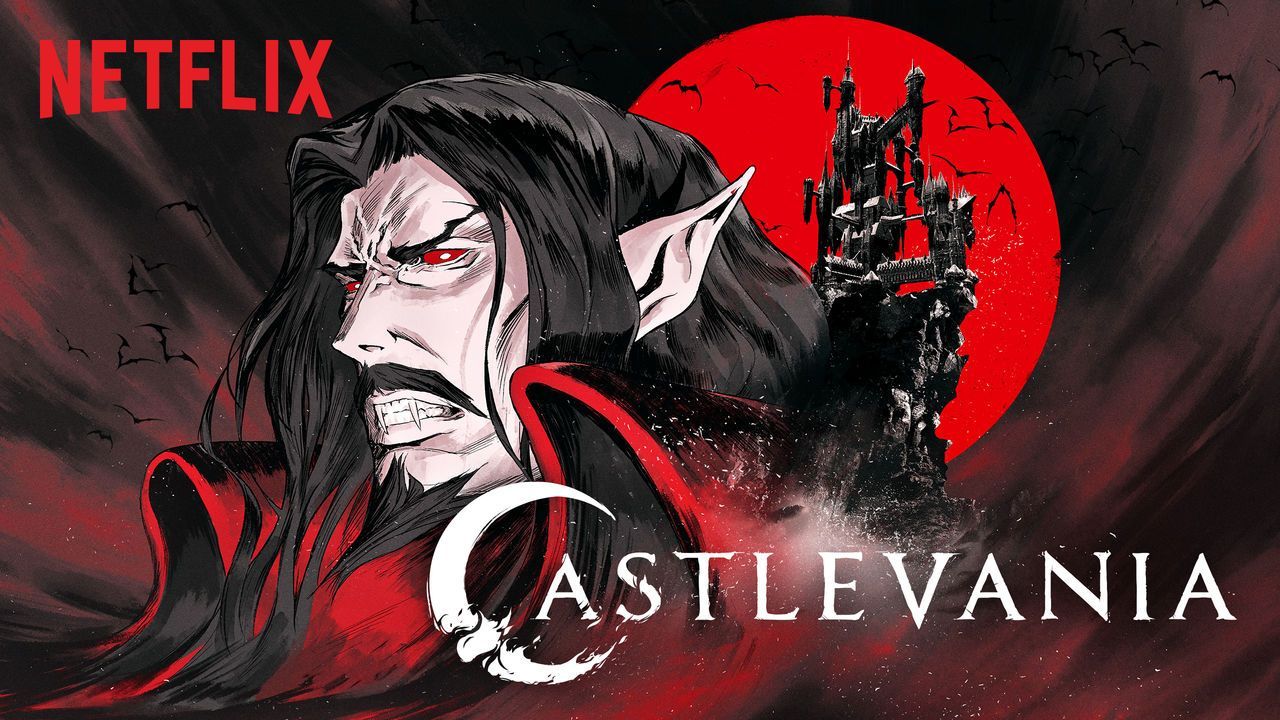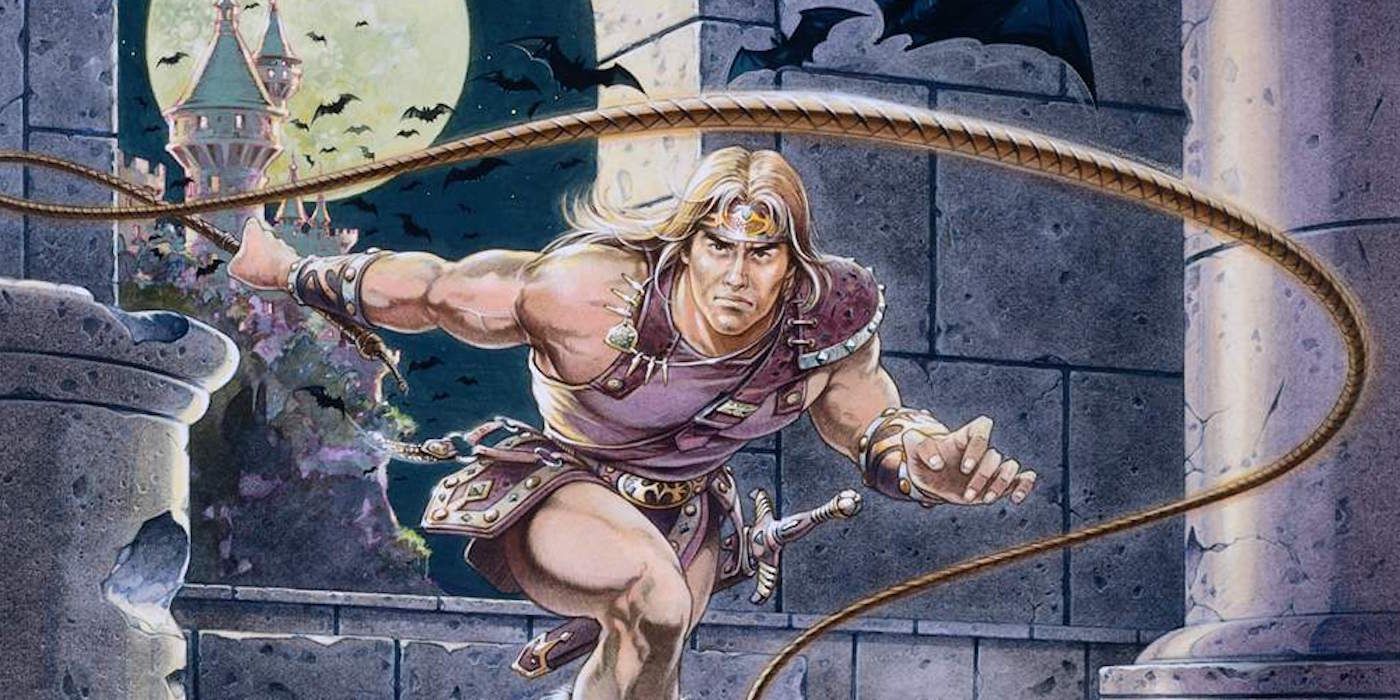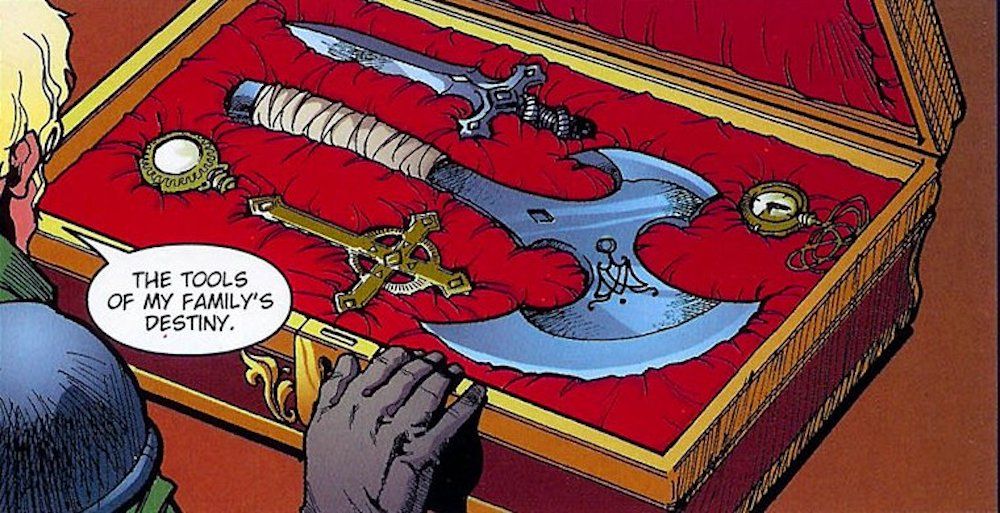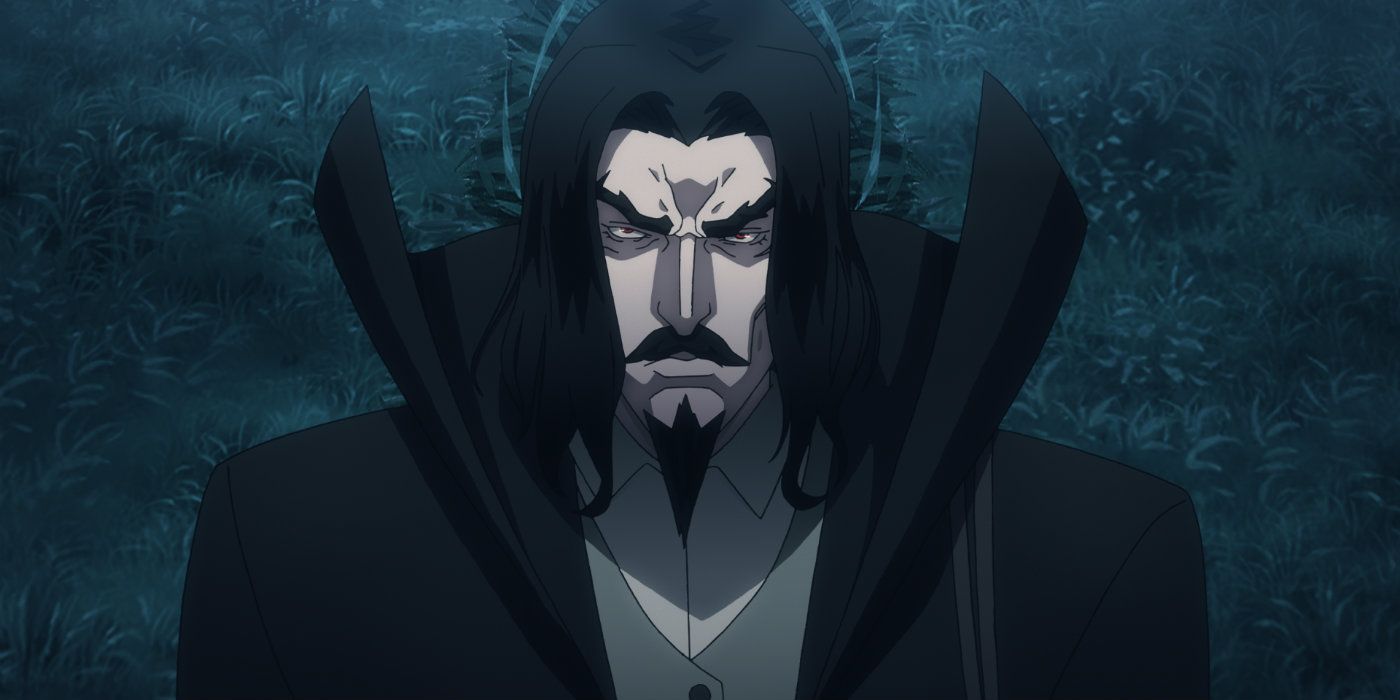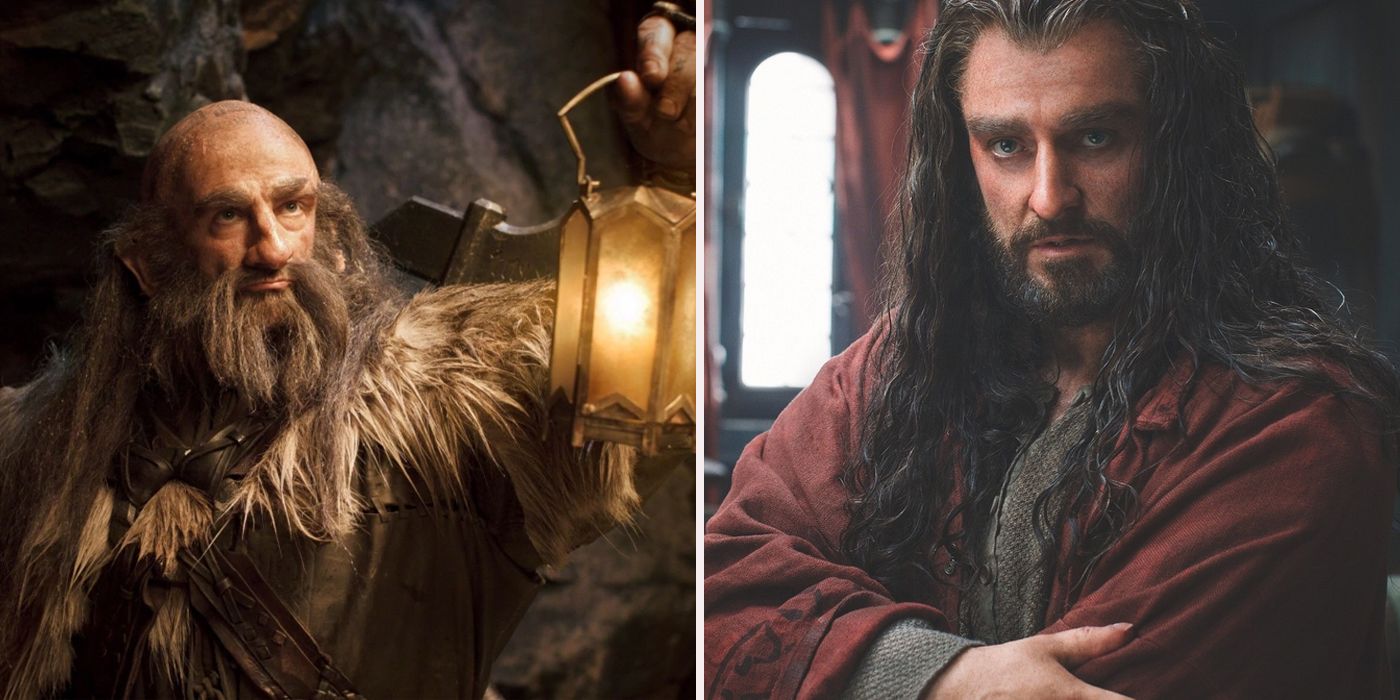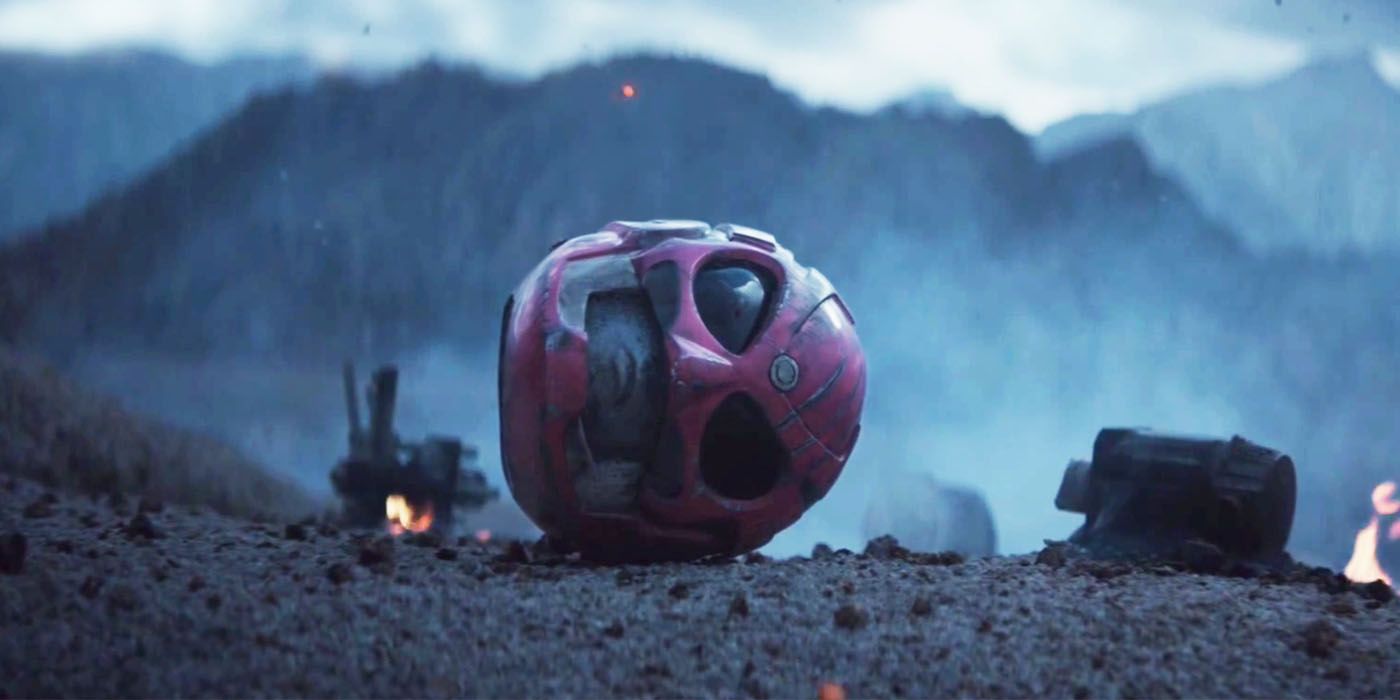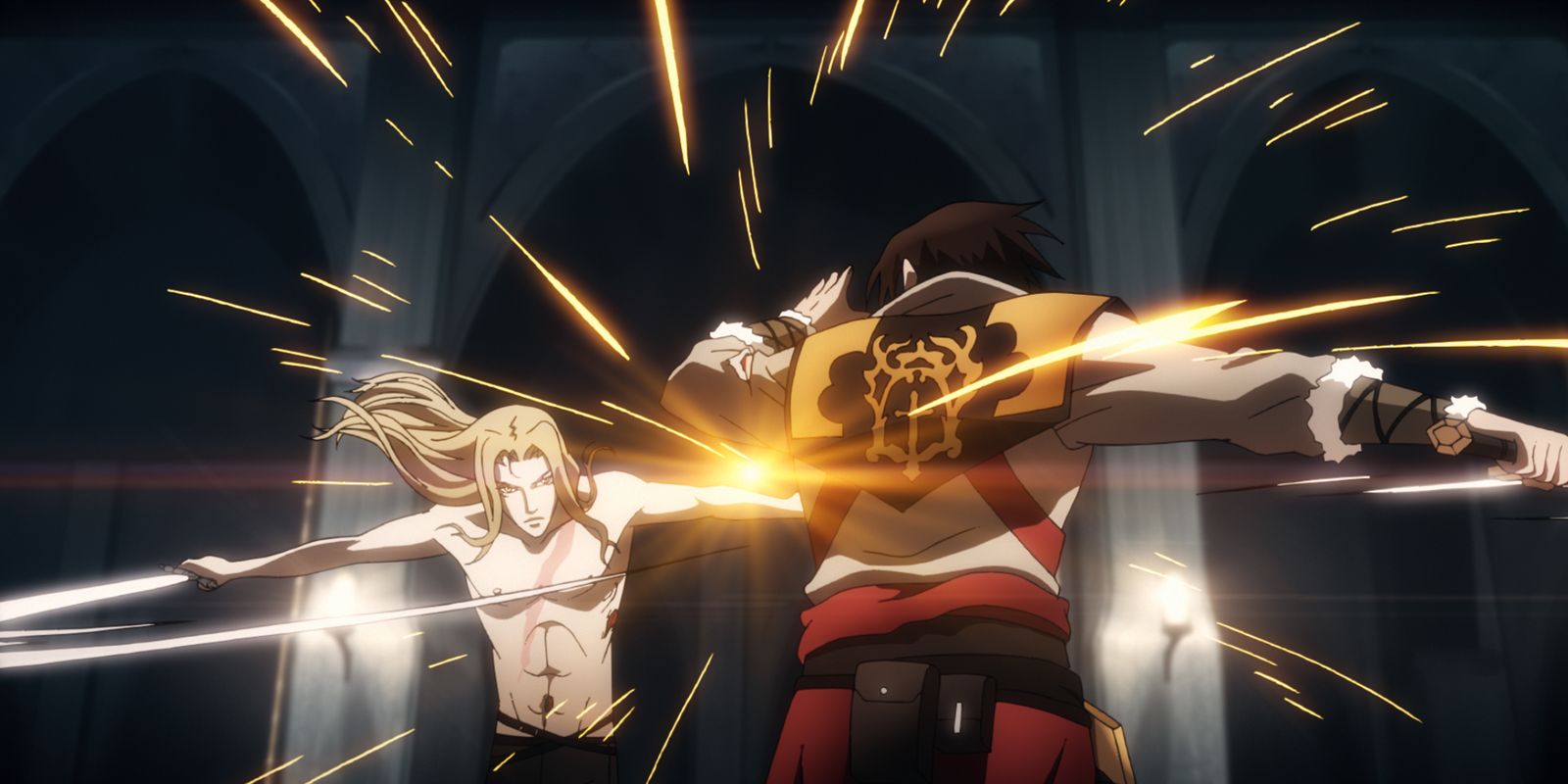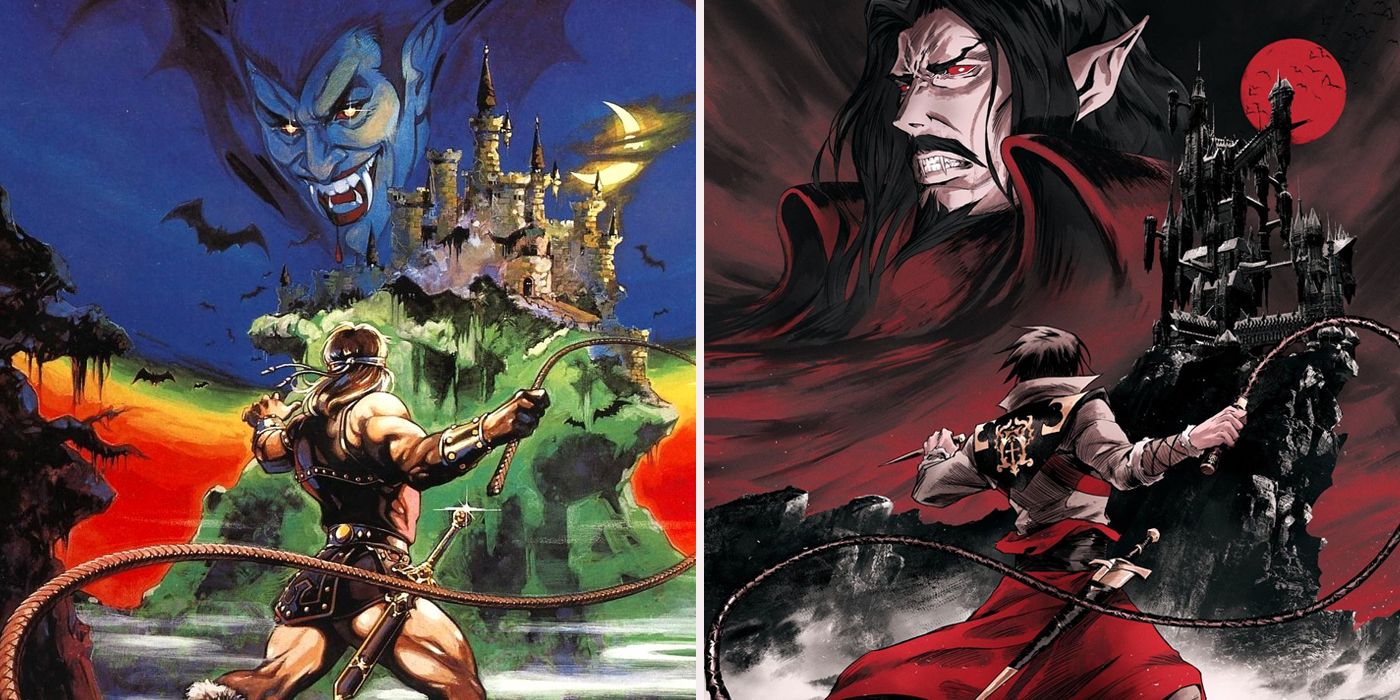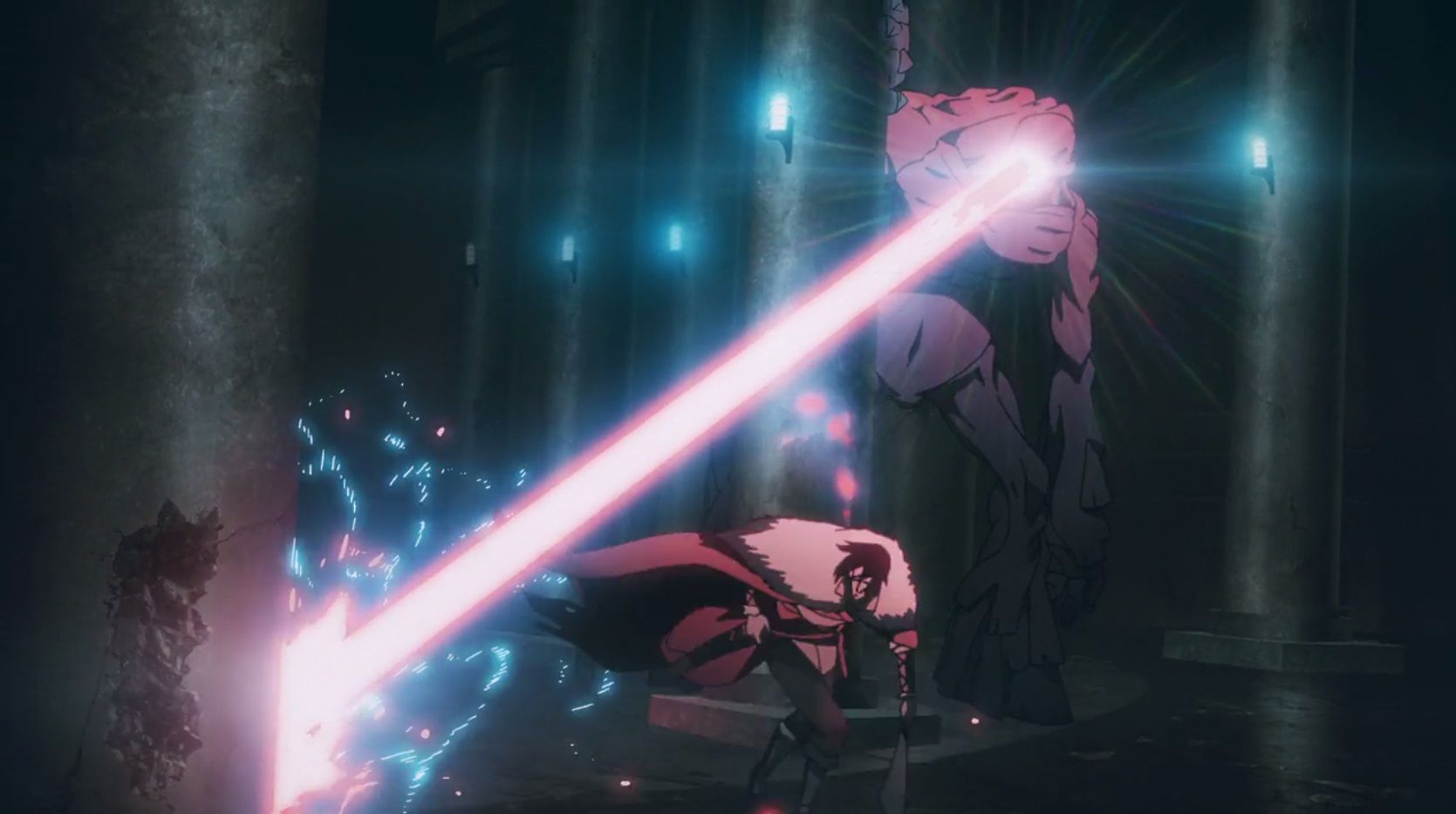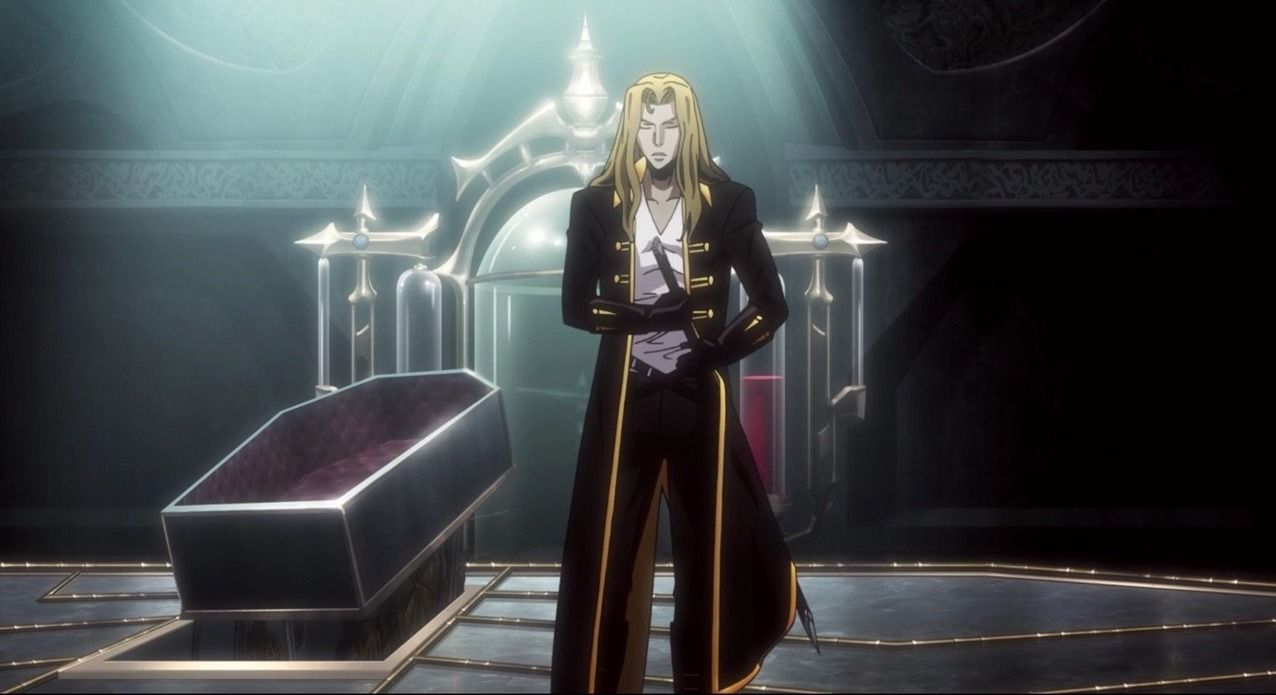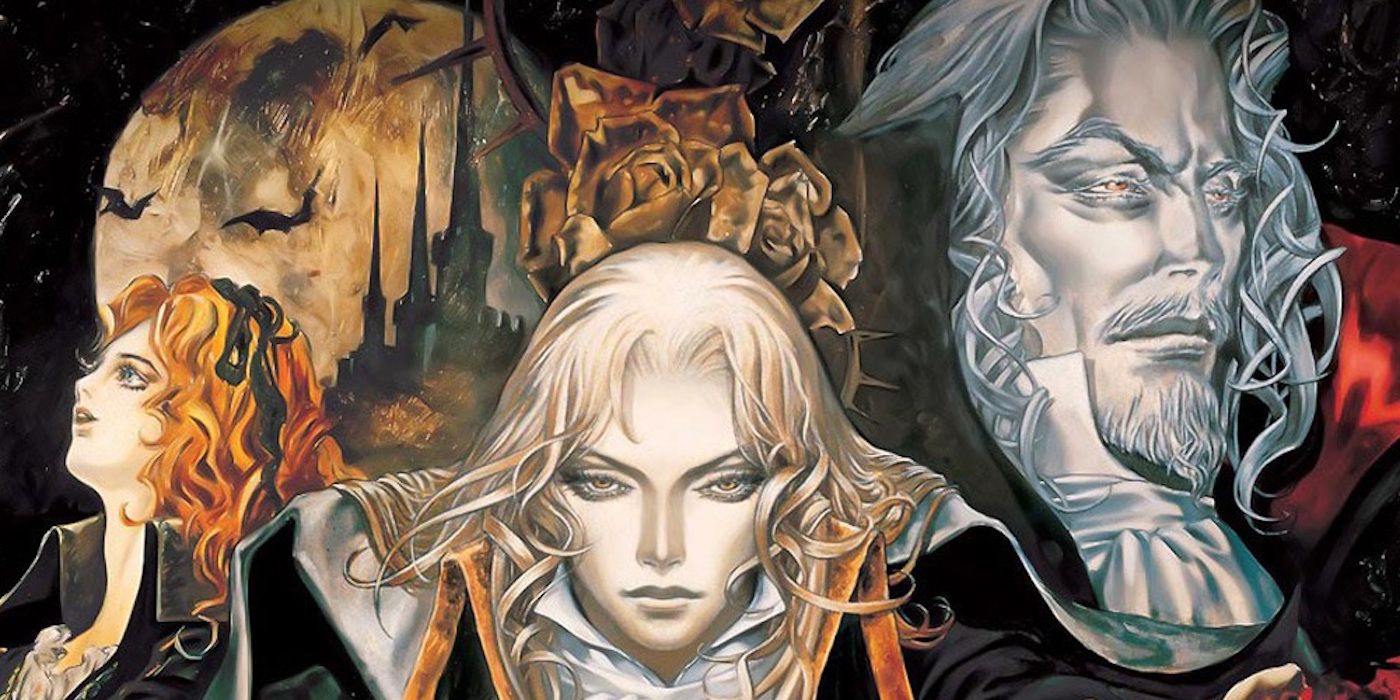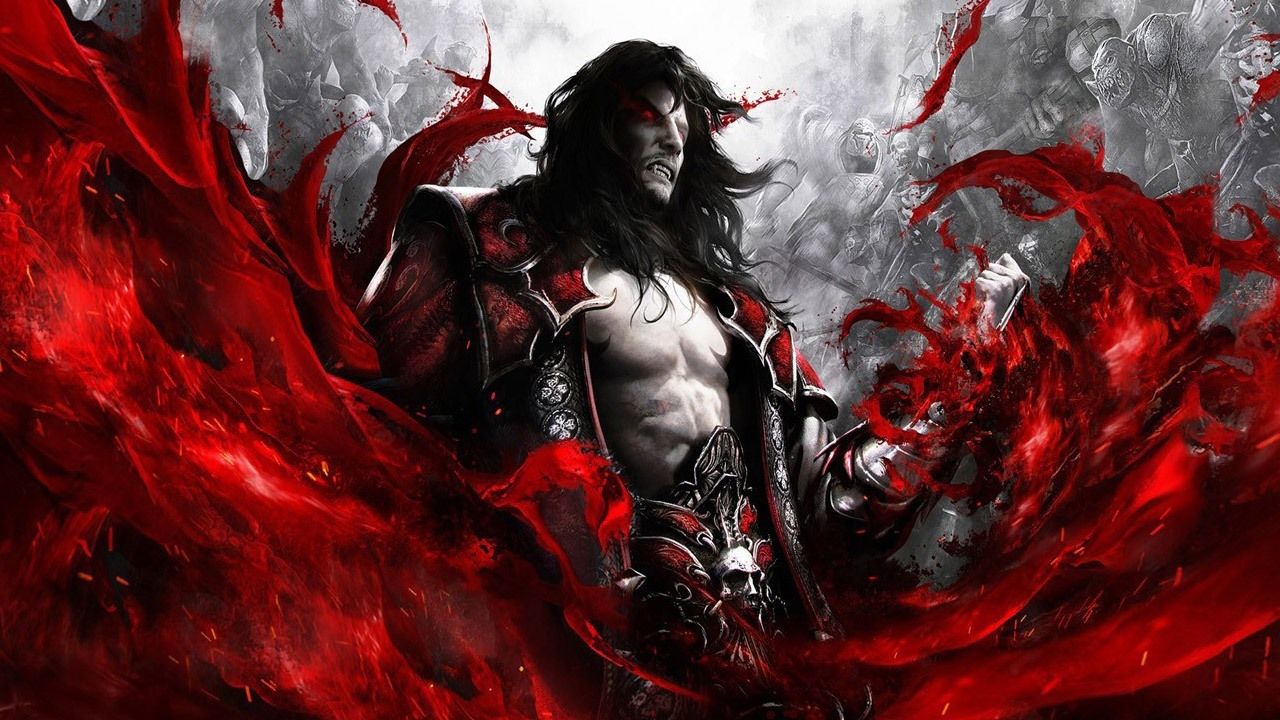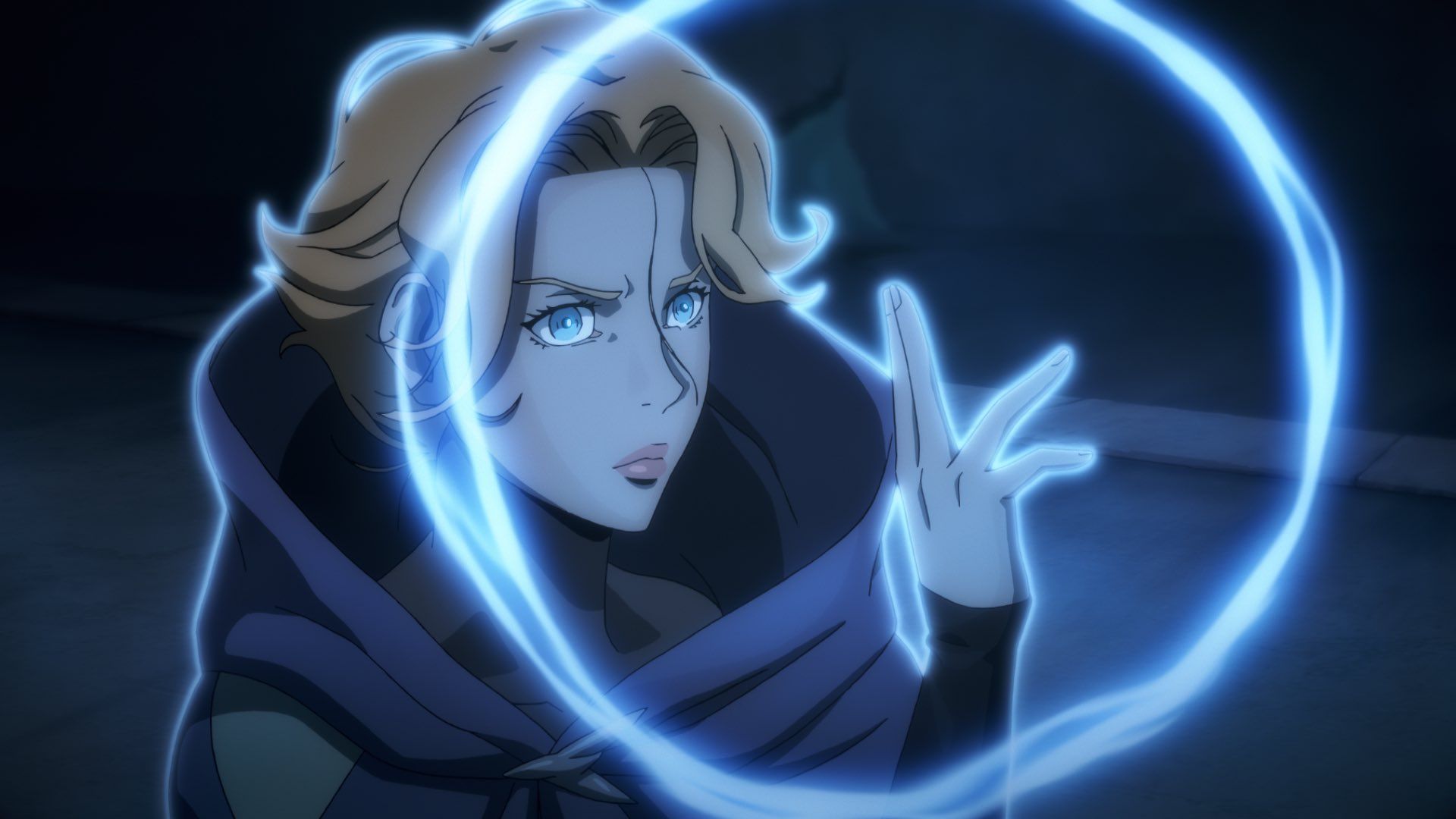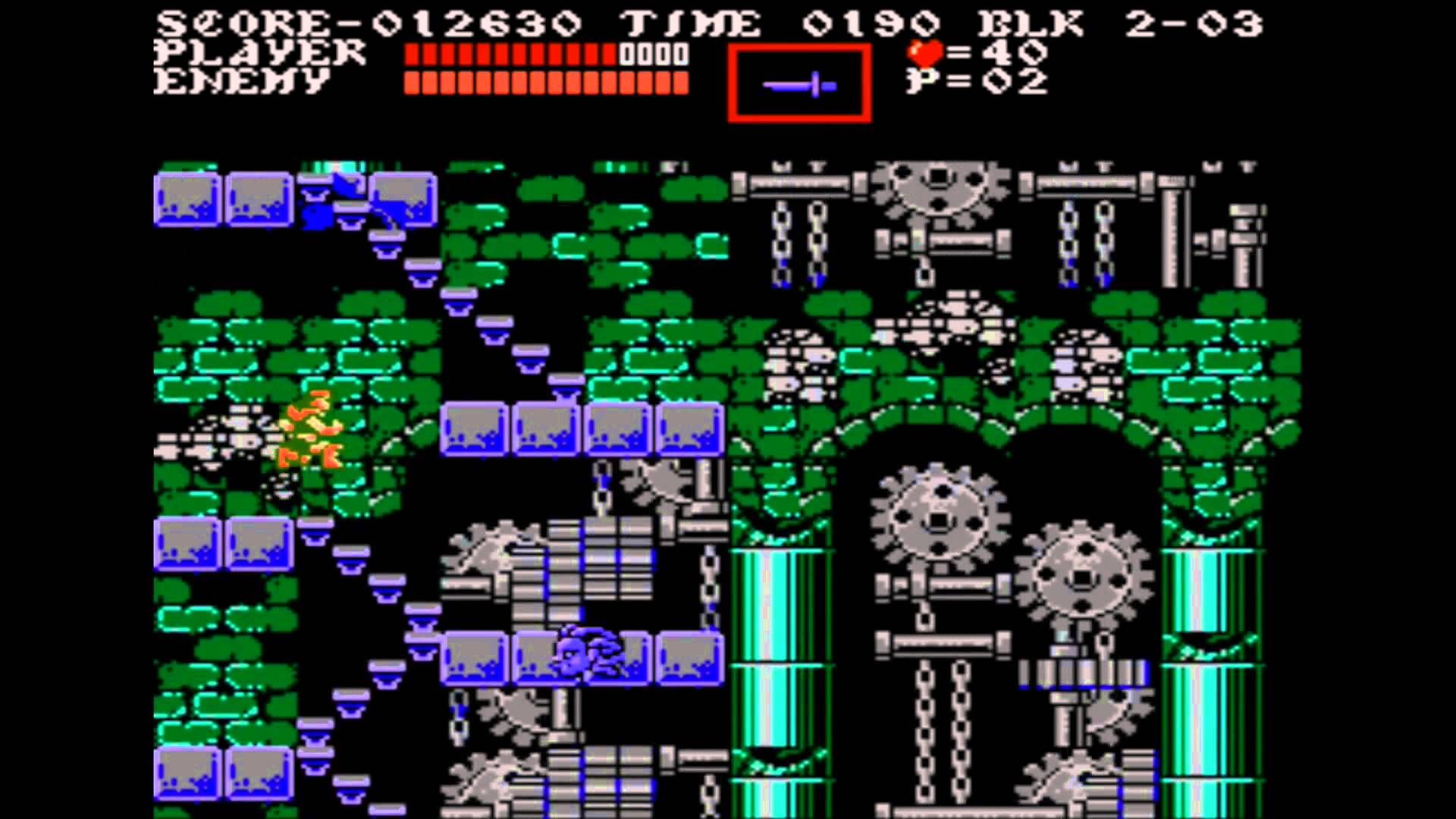A proper adaptation for Castlevania has been a long time coming.
The franchise, which got its start on the NES, has a long history of top-quality games, and many were ecstatic when Netflix dropped the first season of their take on Castlevania into the monstrous horde of fans, who were eager to drink its blood and taste its flesh... or something like that.
Based on the third entry in the franchise, Castlevania III: Dracula's Curse, the violent, gory, and profane Netflix series follows Trevor Belmont, the last of the exiled Belmont Clan, who meets a young sorceress named Sypha Belnades. The duo then team up with the son of Dracula, Alucard, in order to eliminate the catastrophic threat of Count Vlad Tepes himself.
Thankfully, the show runners were keen enough to include numerous Easter eggs and references to the storied history of the franchise, giving long-time fans something further to chew on.
With that said, it's time to grab your oak stake and garlic, because we're marching straight to the Castle with our list of the 15 Things You Didn't Know About Netflix's Castlevania.
15. The Whip's Incendiary Powers Are Explained
When Castlevania appeared from the mist on the NES in 1987, players were delighted to lay waste to Dracula’s minions with the unconventional weapon of a whip.
Known as “Vampire Killer,” this item became a series' hallmark, with an iteration of it appearing throughout its storied history in nearly every entry. Along with its appearance, however, also came its ability to make the player’s enemies explode into balls of fire.
For a time, this could have been chalked up as a way to save the programmer’s from having to animate gory death sequences or elaborate expirations, but Netflix’s Castlevania proves that fiery doom awaits all unholy creatures who face the whip’s wrath.
In the series, Trevor strikes an oncoming vampiric demon with it and, upon being lashed, the creature’s flesh bubbles up and combusts in a bloody, incendiary display, solidifying what was started way back on the Nintendo Entertainment System, all thanks to it being blessed to deal with the supernatural.
14. Trevor Subtly Uses The Sub-Weapons
The original Castlevania was technically an action-platformer, but its actual mechanics separated it from its genre kin. Where others were fast paced, fluid, and twitchy, Castlevania was clunky, slow, and contemplative.
The Belmont you controlled strutted along at a deliberate pace, his jumps were unwieldy, and there was a delay in your attack command. These were intentional gameplay additions, as the stages were strategically designed around this, with treacherous enemy placement and patterns.
To make things easier, a selection of sub-weapons could be collected that would bolster your Belmont’s weaknesses, such as a fast, far-flying dagger, or an axe that could attack vertical enemies.
In the Netflix series, Trevor uses nearly all of the classic sub-weapons in one way or another, and it’s exciting to behold for long-time fans. He’s armed with silver daggers that he’s prone to throwing, crosses are regularly brandished, an axe is hurled during one scene, and he even gets a local priest to consecrate buckets of water in order to sear the flesh off a demonic horde.
In fact, the only sub-weapon that doesn’t make an appearance is the time-stopping clockwatch, but perhaps that’ll be reserved for the second season.
13. The Script Was In Production For A Decade
Back in 2007, a blog run by Warren Ellis appeared to reveal that pre-production was beginning on a yet-unannounced animated film based on Castlevania III: Dracula’s Curse.
Periodically, snippets of his script or concept art for the production would appear, trickling information for years until it finally stopped. However, even then, eagle-eyed fans kept noticing that the copyright of the site continued to update, giving a faint flicker of hope like a dying candelabra in the castle crypt, until, that too, stopped.
Now, the blog has been laid to rest, forever entombed, but its contents live on in the form of Netflix’s series, with Ellis as the main writer.
While some may argue that the new series uses a brand-new script, it’s clear to those who read the excerpts years ago that most of the elements were carried over. This is all but confirmed by one infamous sequence in which two locals discuss how their acquaintance has gone blind from his, er, “encounters” with one of their goats.
Who would have thought that a disgusting discussion about bestiality would have been the proof that Ellis’ script eventually saw the light of day?
12. Dracula And Trevor Were Both In The Hobbit
The two major players in the Castlevania series have been Dracula and the Belmont family. It’s only fitting that both Dracula and Trevor Belmont’s voice actors in the 2017 series have a history together in one specific property: The Hobbit.
Graham McTavish, the man who brings Vlad Tepes to life, has a long list of television, film, and video game credits, doing everything from playing Tommy Holiday in Creed to acting as a mercenary in Rambo.
However, his time as Dwalin in The Hobbit trilogy is likely what he’s best known for in the geeky realm. As Dwalin the dwarf, he survived the ordeal of the Lonely Mountain and the Battle of the Five Armies, going on to bid farewell to Bilbo with the rest of his comrades at its conclusion.
Trevor’s voice actor, Richard Armitage, is also no slouch when it comes to roles, being a pilot in Star Wars Episode I, Francis Dolarhyde in Hannibal, and having countless stage roles. However, he too, also toiled in the mountains during The Hobbit films as Thorin Oakenshield, the man who led the expedition that would set the sometimes-questionable events of the Lord of the Rings in motion.
11. Adi Shankar Is Well-Known For Dark Adaptations
Adi Shankar has a long history in making violent, irreverent takes on beloved nostalgic properties, and as producer of the 2017 Castlevania, he lives up to his reputation.
Born in India, he has made a name for himself by being the executive producer on 2012’s Dredd, an excellent film based on the A.D. 2000 property Judge Dredd, whose gritty atmosphere and straight-forward action created a cult fanbase.
Along with this, he’s also made a series of one-shot films that he calls “the Bootleg Universe,” which are typically radical takes on familiar properties. A major hit in this roster was his take on the Power Rangers, titled Power/Rangers, which focused on a timeline where the Rangers lost, starting a downward spiral into darkness.
Best of all, his version of Castlevania has been a hit, and he’ll be using his video game adaptation magic on yet another franchise, specifically the wildly successful Assassin’s Creed property, which will also be on Netflix in the future.
10. The Belmont Family Crest Is From Lords Of Shadow
Before the Castlevania: Lords of Shadow trilogy was dreamt up, the long-running series was dangerously fatigued and seemingly only relegated to numerous (but still high-quality) installments on handhelds. However, Dracula had other plans.
Released to critical and commercial successs, 2010’s Lords of Shadow was a reimagining to the aging franchise, shaking up much of the lore while retaining all of the critical elements tied to its identity.
While a certain extremely vocal minority of the fanbase decried the trilogy for changing things up, it was great to see the game and its sequels referenced in the Netflix show. During a scene at the local pub, we learn from some angry drunks how much they despite the affluent Belmont family, and that they regret not killing every last one of them when the family was exiled.
No sooner is this revealed that Trevor Belmont, the main protagonist, makes his presence known and absent-mindedly reveals a crest on his shirt. The crest is that of the Belmont family, and its appearance is nearly identical to how its look in the Lords of Shadow games.
Seeing this was an awesome nod to the divisive series, so here’s to hoping there’s more to come.
9. The Original Cover Art Is Referenced
NES games are notorious for having cover art that either totally lies about the content of the game, or is an awfully rendered, nightmare-version of the main character.
For example, the cover of Bomberman features a robotic warrior cradling a futuristic bomb while explosions surround him, while the game, despite having a similar presence, follows a cute little guy that drops cartoony bombs on questionably-evil balloons.
Then there’s the Mega Man box art, which, instead of featuring a robotic youth with a gun on his arm, chooses to represent the game by having a forty-something year-old man wearing baggy clothes holding a pistol.
Thankfully, the original Castlevania’s artwork was accurate and awesome, with Simon Belmont striking a heroic pose and brandishing his deadly whip in front of the dreaded Castle.
One oddity about the art, however, is that Simon appeared to have a holstered sword at his side, which was never used in-game. Thankfully, Trevor makes use of that very sword throughout the Netflix series, and its an excellent callback to fans who have always wanted to see a Belmont let loose with the sheathed weapon.
8. The Cyclops Is Straight Out Of Dracula's Curse
Castlevania III is unquestionably the most brutally difficult game in an already excruciatingly difficult series. While the stages and enemies provided ample challenge, the bosses added an even more imposing challenge to players skilled enough to reach them.
Netflix’s Castlevania took note of this, and made sure to feature one of the more iconic bosses from the game, the dreaded Cyclops.
In actuality, the Cyclops is one of the easier bosses, able to be crushed quite easily from the relative safety of a nearby cliff. That said, the show amped up his presence, ditching his massive hammer for the power to turn people into stone, and created an elaborately choreographed fight sequence to boot.
Even cooler was that a little known trick to defeating the Cyclops, using the dagger when lightning strikes, was referenced by having Trevor tie a dagger to a the end of whip and using his to kill the beast.
7. Alucard References Multiple Games
Alucard originally appeared in Castlevania III: Dracula’s Curse, but it wasn’t until Symphony of the Night that his popularity skyrocketed, forever cementing him as a favorite in the franchise, so it’s only appropriate that his character reflects this.
Similar to SotN, he is the son of Dracula and a human named Lisa, having the powers of his father and the love of his mother. After Dracula decides to lay waste to humankind, Alucard takes matters into his own hands, as his compassion will not allow for this kind of slaughter, and takes a stand against his father.
Plot details aren’t the only homages, however, as he also references the official artwork for Symphony of the Night, where he strikes the iconic pose of his sword to his face for a brief second in the opening credits.
Lastly, his actual appearance mirrors both his Symphony of the Night regalia and his general look from Lords of Shadow. In LoS, he wears his jacket open, shirtless, with his scarred body on full display, which is how he first appears in this series. Later, he dons his famous jacket, matching up with his 1997 counterpart, combining the best of both worlds.
6. Dracula Mirrors Original Artwork
During the first episode, we learn much about Dracula and his relationship with humanity. After having his beloved taken away by witch-hunting crowds, Dracula makes a vow to utterly decimate everyone in Wallachia.
He uses an enchanted mirror to make this proclamation and, for a brief second, his look and aesthetic are a nearly identical image to that of his character portrait in Symphony of the Night, done by Ayami Kojima.
Ayami Kojima is a fantastically talented artist who, using massive canvas and multiple mediums, has created countless official artworks for the Castlevania franchise, often filled with haunting hidden imagery and surreal, dream-like qualities.
It was wonderful to see her art referenced in this production, as she had long-defined the look of the series with her gothic style and imposing atmospheric presence through her art.
5. The Science Angle Is Borrowed From Lords Of Shadow 2
The Castlevania gamed series predominantly focused on medieval time periods, weapons and magic, with science or modern technology typically relegated to a near non-existent role.
This is all turned upside down in the Netflix series, where Dracula has a keen interest in genuine science, despite some flourishes. In peaceful times, he taught Lisa the science of medicine, but after her death, he combined his hellish powers with his empirical knowledge and laid waste to the countryside.
Strangely enough, this was a plot point in Lords of Shadow 2. Placing the players in the role of Dracula in the near future, he awakens to find that the ruins of his castle have been turned into a modern city, and the children of Satan secretly run the major corporations within it.
With the Devil’s help, they’d been mixing science with hellish arts, creating monstrously powerful artificial beings and super-viruses with demonic elements in order to bring about the apocalypse, posing major threats to not just the world, but Dracula himself.
4. There's A Sly Reference To A Translation Error
Sypha Belnades is one of four playable characters in Dracula’s Curse. With her, the player is able to use magic abilities, providing a great contrast between her and Trevor Belmont.
Being an integral part of the game, it was absolutely fitting for her to play a major role in the animated adaptation. Unexpectedly, however, Warren Ellis made sure to reference an oddity from the game’s original script.
Before Sypha’s introduction in the series, Trevor is told he must rescue a Speaker’s “grandchild,” who is then referred to exclusively by gender-neutral terms, surprising Trevor to her identity as a woman upon finally meeting her.
In the original game, when the player comes across Sypha, they are asked if they want to take “him” with them or leave “him” behind. Couple that with her hooded (and sometimes manly) artwork, a great debate took over playgrounds all over the '90s about her gender, despite the fact that the game calls her a “she” in the finale.
However, then again, who in the world could get that far in the impossibly difficult Castlevania III?
3. Warren Ellis Is An Award-Winning Writer
The writer for Castlevania, Warren Ellis, is an award-winning author, well-known for a myriad of creative endeavors, such as screenplays and novels, but his biggest claim to fame is the work he’s done in regards to comic books.
Although a large body of his work is with original series, such as Red, Trees, and Injection, he’s also spent time as a writer for Marvel, with Moon Knight, X-Men and even the groundwork for Iron Man 3, the Extremis arc.
He’s rightfully received recognition for his efforts, too, as the recipient of seven Eagle Awards in various categories, the Sidewise Award, and a the Best One-Shot from Wizard Magazine.
Most intriguingly, however, are his transhumanist beliefs, which permeate throughout his body of work, and even into Castlevania, with its focus on science leading to salvation, but being misunderstood by a group threatened by its power.
2. The Infamous Clock Tower
One of the most iconic parts of the titular Castlevania is its Clock Tower. Typically filled with some of the most difficult and frustrating platforming in any given game, it’s also a usual contender for having a critical showdown with an extremely powerful boss.
Netflix’s Castlevania was acutely aware of this, and they made sure to incorporate both of these elements. As Sypha and Trevor sought a "legendary warrior" within the depths of the catacombs, the two found themselves in a clockwork-laden dungeon, complete with rotating gears and death-defying swings, courtesy of the holy whip.
While this area wasn’t technically the Clock Tower proper, it contained nearly all of the elements about it that makes gamers sweat, and also managed to reference an exact stage from Castlevania III. Of course, waiting for 0ur heroes at the end was a climactic clash against the son of Dracula himself, Alucard, satisfying the requirement for a challenging boss battle.
Thankfully there were no Medusa Heads to speak of, but it would have been nice to see Grant DaNasty, who is found in the tower, and is the only major character missing from the proceedings.
1. Simon's Quest's Lousy Villagers Are In It
Simon’s Quest, the second Castlevania game for the NES, is generally considered one of the worst games in not just the series, but the system's entire library. Its slow-pace is crippling, its difficulty can feel insurmountable, and, worst of all, its progression is exceedingly cryptic, to the point where if you don’t have a guide, you might not make any progress at all.
A large portion of the frustration is caused by the game’s many “helpful” denizens. Within a town’s walls, Simon is able to converse with these aimless wanderers for tips, but don't expect too much. Aside from blatantly lying, they’ll say things like “do not look into the death star or you will die,” and “believe in magic and you'll be saved,” both of which mean absolutely nothing… or do they?
It was a treat to see these villagers referenced in the 2017 series, as Trevor walks through a town, gathering information, and listening to all kinds of nonsense from the many of the local citizens.
If you were a fan of the games but hesitant to give the series a try, this reason alone should be enough assurance to prove that you won’t be disappointed.
---
What do you think about Netflix's Castlevania? Are there any other interesting facts we missed? Let us know in the comments!

